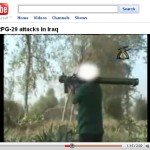Missile Watch – June 2010
Missile Watch
A publication of the FAS Arms Sales Monitoring Project
Vol. 3, Issue 2
June 2010
Editor: Matt Schroeder
Contributing Author: Scoville Fellow Matt Buongiorno
Contents:
Global News: Survey of black market prices for shoulder-fired anti-aircraft missiles reveals large differences in missile prices
Afghanistan: No shoulder-fired anti-aircraft missiles in seized Afghan arms caches, confirms ISAF spokesperson
Egypt: Shoulder-fired missiles found in the Sinai were old, “in very bad condition,” says Egyptian official
Iraq: Shoulder-fired missile in video of insurgent attack could be Iranian
Iraq: Missile seized in 2008 was a 30-year-old Russian Strela-2M MANPADS, documents reveal
Iraq: At least 27 shoulder-fired anti-aircraft missiles seized from arms caches in Iraq since February
Lebanon: Israeli claim about Igla-S delivery to Hezbollah raises many questions
Peru: U.S. government concerned over reported missile diversion in Peru, but praises investigation
Somalia: Shoulder-fired missile attack at Mogadishu airport foiled by peace-keepers, according to UN report
Additional News & Resources
About Missile Watch
About the Authors
While advanced Chinese language proficiency and cultural familiarity remain irreplaceable skills, they are neither necessary nor sufficient for successful open-source analysis on China’s nuclear forces.
Satellite imagery has long served as a tool for observing on-the-ground activity worldwide, and offers especially valuable insights into the operation, development, and physical features related to nuclear technology.
This report outlines a framework relying on “Cooperative Technical Means” for effective arms control verification based on remote sensing, avoiding on-site inspections but maintaining a level of transparency that allows for immediate detection of changes in nuclear posture or a significant build-up above agreed limits.
The grant comes from the Carnegie Corporation of New York (CCNY) to investigate, alongside The British American Security Information Council (BASIC), the associated impact on nuclear stability.
